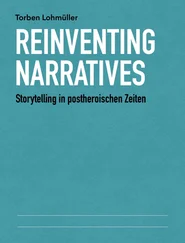10 End User License Agreement
1 Chapter 8Table 8.1 The three ages/models of priority education policies
1 Chapter 1 Figure 1.1. Approaches to accessibility across educational policies (adapted fro...
2 Chapter 5Figure 5.1. Model for analyzing teachers’ gestures and postures in order to make...
3 Chapter 11Figure 11.1. Determinants of access. For a color version of this figure, see www...
1 Cover
2 Table of Contents
3 Title Page SCIENCES Education and Training , Field Director – Jean-Marc Labat Education and Society , Subject Heads – Géraldine Farges and Xavier Pons
4 Copyright First published 2021 in Great Britain and the United States by ISTE Ltd and John Wiley & Sons, Inc. Apart from any fair dealing for the purposes of research or private study, or criticism or review, as permitted under the Copyright, Designs and Patents Act 1988, this publication may only be reproduced, stored or transmitted, in any form or by any means, with the prior permission in writing of the publishers, or in the case of reprographic reproduction in accordance with the terms and licenses issued by the CLA. Enquiries concerning reproduction outside these terms should be sent to the publishers at the undermentioned address: ISTE Ltd 27-37 St George’s Road London SW19 4EU UK www.iste.co.uk John Wiley & Sons, Inc. 111 River Street Hoboken, NJ 07030 USA www.wiley.com © ISTE Ltd 2021 The rights of Serge Ebersold to be identified as the author of this work have been asserted by him in accordance with the Copyright, Designs and Patents Act 1988. Library of Congress Control Number: 2020946951 British Library Cataloguing-in-Publication Data A CIP record for this book is available from the British Library ISBN 978-1-78945-011-8 ERC codes: SH3 The Social World, Diversity, Population SH3_3 Social integration, exclusion, prosocial behaviour SH3_7 Social policies, welfare SH3_11 Social aspects of learning, curriculum studies, educational policies
5 Introduction
6 Begin Reading
7 List of Authors
8 Index
9 End User License Agreement
1 v
2 iii
3 iv
4 xi
5 xii
6 xiii
7 xiv
8 xv
9 xvi
10 xvii
11 xviii
12 xix
13 xx
14 xxi
15 xxii
16 xxiii
17 xxiv
18 xxv
19 1
20 3
21 4
22 5
23 6
24 7
25 8
26 9
27 10
28 11
29 12
30 13
31 14
32 15
33 16
34 17
35 18
36 19
37 20
38 21
39 23
40 24
41 25
42 26
43 27
44 28
45 29
46 30
47 31
48 32
49 33
50 34
51 35
52 36
53 37
54 38
55 39
56 40
57 41
58 42
59 43
60 44
61 45
62 46
63 47
64 48
65 49
66 50
67 51
68 52
69 53
70 54
71 55
72 56
73 57
74 58
75 59
76 60
77 61
78 63
79 64
80 65
81 66
82 67
83 68
84 69
85 70
86 71
87 72
88 73
89 74
90 75
91 76
92 77
93 78
94 79
95 80
96 81
97 82
98 83
99 84
100 85
101 86
102 87
103 88
104 89
105 90
106 91
107 92
108 93
109 94
110 95
111 96
112 97
113 98
114 99
115 100
116 101
117 102
118 103
119 104
120 105
121 106
122 107
123 108
124 109
125 110
126 111
127 112
128 113
129 114
130 115
131 116
132 117
133 118
134 119
135 120
136 121
137 122
138 123
139 124
140 125
141 126
142 127
143 128
144 129
145 130
146 131
147 132
148 133
149 135
150 136
151 137
152 138
153 139
154 140
155 141
156 142
157 143
158 144
159 145
160 146
161 147
162 148
163 149
164 150
165 151
166 152
167 153
168 155
169 156
170 157
171 158
172 159
173 160
174 161
175 162
176 163
177 164
178 165
179 166
180 167
181 168
182 169
183 170
184 171
185 172
186 173
187 175
188 176
189 177
190 178
191 179
192 180
193 181
194 182
195 183
196 184
197 185
198 186
199 187
200 188
201 189
202 190
203 191
204 192
205 193
206 194
207 195
208 196
209 197
210 198
211 199
212 200
213 201
214 202
215 203
216 204
217 205
218 206
219 207
220 208
221 209
222 210
223 211
224 212
225 213
226 214
227 215
228 216
229 217
230 218
231 219
232 220
233 221
234 222
235 223
236 224
SCIENCES
Education and Training , Field Director – Jean-Marc Labat
Education and Society , Subject Heads – Géraldine Farges and Xavier Pons
Accessibility or Reinventing Education
Coordinated by
Serge Ebersold

First published 2021 in Great Britain and the United States by ISTE Ltd and John Wiley & Sons, Inc.
Apart from any fair dealing for the purposes of research or private study, or criticism or review, as permitted under the Copyright, Designs and Patents Act 1988, this publication may only be reproduced, stored or transmitted, in any form or by any means, with the prior permission in writing of the publishers, or in the case of reprographic reproduction in accordance with the terms and licenses issued by the CLA. Enquiries concerning reproduction outside these terms should be sent to the publishers at the undermentioned address:
ISTE Ltd
27-37 St George’s Road
London SW19 4EU
UK
www.iste.co.uk
John Wiley & Sons, Inc.
111 River Street
Hoboken, NJ 07030
USA
www.wiley.com
© ISTE Ltd 2021
The rights of Serge Ebersold to be identified as the author of this work have been asserted by him in accordance with the Copyright, Designs and Patents Act 1988.
Library of Congress Control Number: 2020946951
British Library Cataloguing-in-Publication Data
A CIP record for this book is available from the British Library
ISBN 978-1-78945-011-8
ERC codes:
SH3 The Social World, Diversity, Population
SH3_3 Social integration, exclusion, prosocial behaviour
SH3_7 Social policies, welfare
SH3_11 Social aspects of learning, curriculum studies, educational policies
Serge EBERSOLD
Lise, Conservatoire national des arts et métiers (CNAM), Paris, France
Accessibility is undoubtedly a unifying concept that makes it possible to understand the aggiornamento of the school system that accompanies the advent of a societal model that makes the uncertain individual a principle of social organization (Ehrenberg 1995) and knowledge the foundation of its economic and social development (Boltanski and Chiapello 2000). The accessibility of school environments is a social concept that has loomed over educational policies and, more generally, public policies for several decades now; specifically, the promotion of inclusive schools focusing on the well-being and success of every learner and ensuring, to this end, that they are receptive to the diversity of learners’ educational profiles, is at the heart of the democratization of European education systems and goes far beyond the issue of disability (Nesse 2012; Zay 2012).
Читать дальше











